RECOIL OFFGRID Preparation Raven Wilderness School Review: Wilderness Survival I
In This Article
I recently had the opportunity to attend Raven Wilderness School’s Wilderness Survival 1 course over the weekend where I joined a group of outdoor enthusiasts as they embarked on their journey to becoming skilled survivalists. The course covers essential skills that can not only save your life in a wilderness emergency but also lays a solid foundation to grow upon.
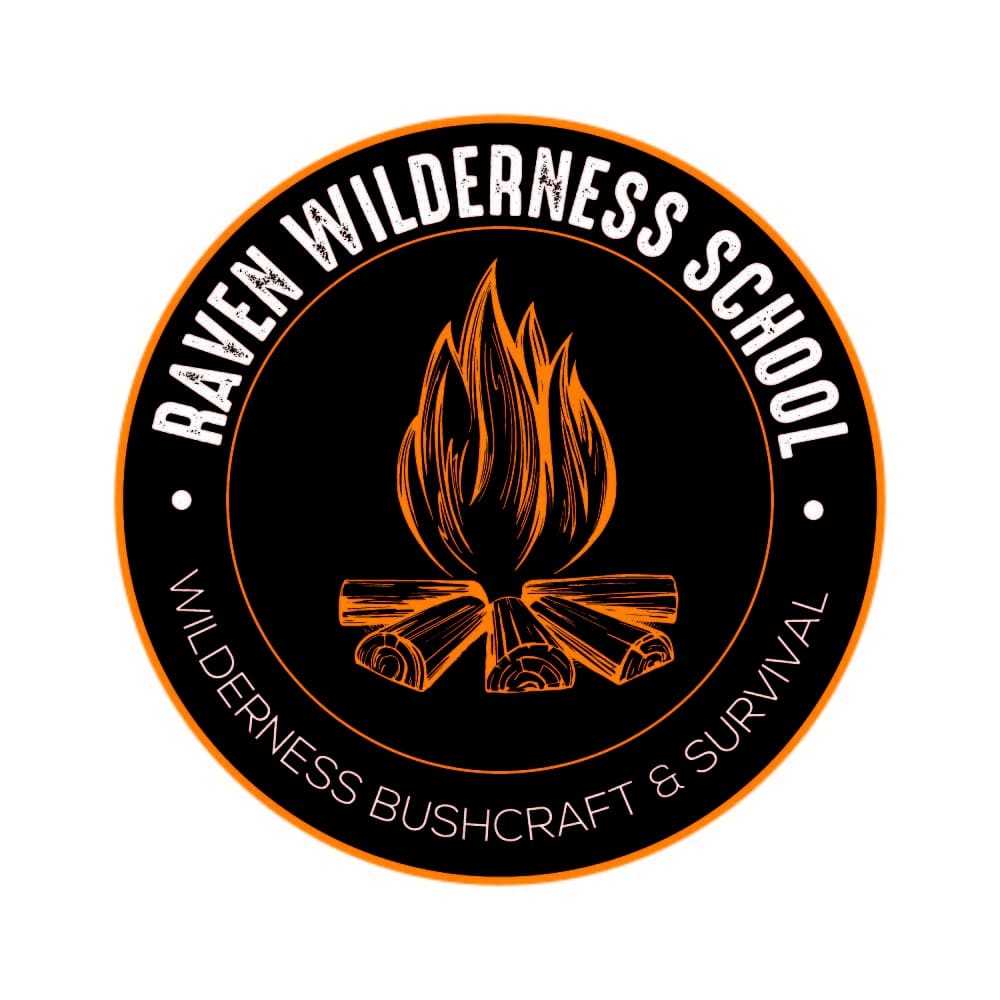
Raven Wilderness School was founded by Jeff Hatch in 2015. Jeff is an experienced outdoor adventurer and wilderness first responder who developed his skillset by learning from some of the most prominent names in wilderness survival including Ray Mears, Lars Falt, and Mors Kochanski
All classes are designed to create immersive experience in a wilderness setting where students can learn to understand, respect, and utilize the environment around them to handle challenging emergency situations. The courses are not just designed to teach hard skills, but also to foster adaptability when facing the many unexpected variables that can occur in a wilderness emergency.

Raven Wilderness School currently offers a number of classes including three levels of wilderness survival as well as specialized courses in land navigation, foraging, and wilderness medicine with many new offerings currently in development.
In addition to Jeff, Raven Wilderness School has several other instructors and apprentices who help make each course a valuable learning experience for all who attend.
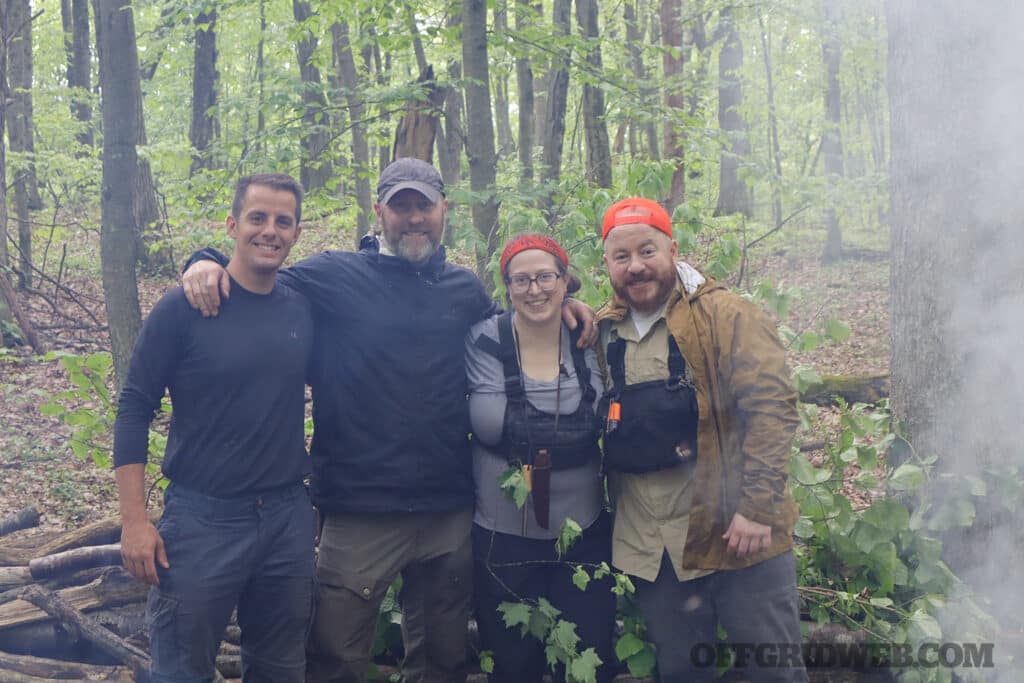
The Instruction Team for Raven Wilderness School’s Wilderness Survival Class
From left to right Thomas Meyer, Jeff Hatch, Avery Sharp, Nunzio Bruno
Raven Wilderness School is housed in Wolcott, Connecticut within Indian Rock Preserve. If you are not from Connecticut chances are you’ve never heard of Wolcott, but the location is ideal for those living in New England and the Mid-Atlantic Region. Being centrally located between New York City and Boston Raven Wilderness School is roughly a 2-hour drive from either city.
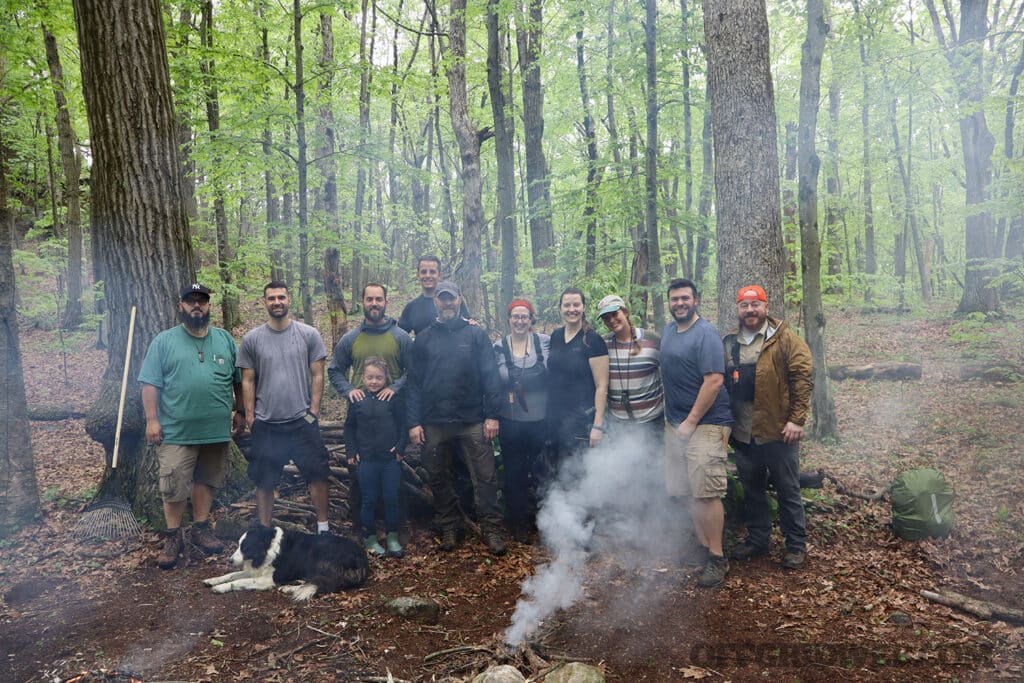
The Wilderness Survival Class. The youngest participant was just 8 years old, but he was eager to learn!
Raven Wilderness School’s Wilderness Survival I course is designed to provide students with tangible skills that can ultimately save their life in a wilderness emergency. These skills include proper tool selection, safety, and use as well as essential fire, water, and shelter skills. Each lesson throughout the course is designed to build upon the previously utilized skills, giving students ample time to practice skills in numerous scenarios while having an instructor guide them. Upon the completion of all the lessons the students are put to the test, requiring them to use all that they have learned to complete a final challenge on their own.
While this course covers the “basics” Jeff’s presentation is anything but basic. Every lesson is packed with not just a tangible skill, but the reasons behind why the skill is important and backed up by experiences in Jeff’s own wilderness adventures. Even with the enormous amount of information being presented, each lesson feels like a conversation allowing plenty of student questions and participation in the learning experience.
Each lesson started with the sharing of knowledge and skills demonstrations by Jeff and his apprentices and was followed by practical exercises where students performed the skills they just learned and allows for ample time and support to make sure each student gets it right.
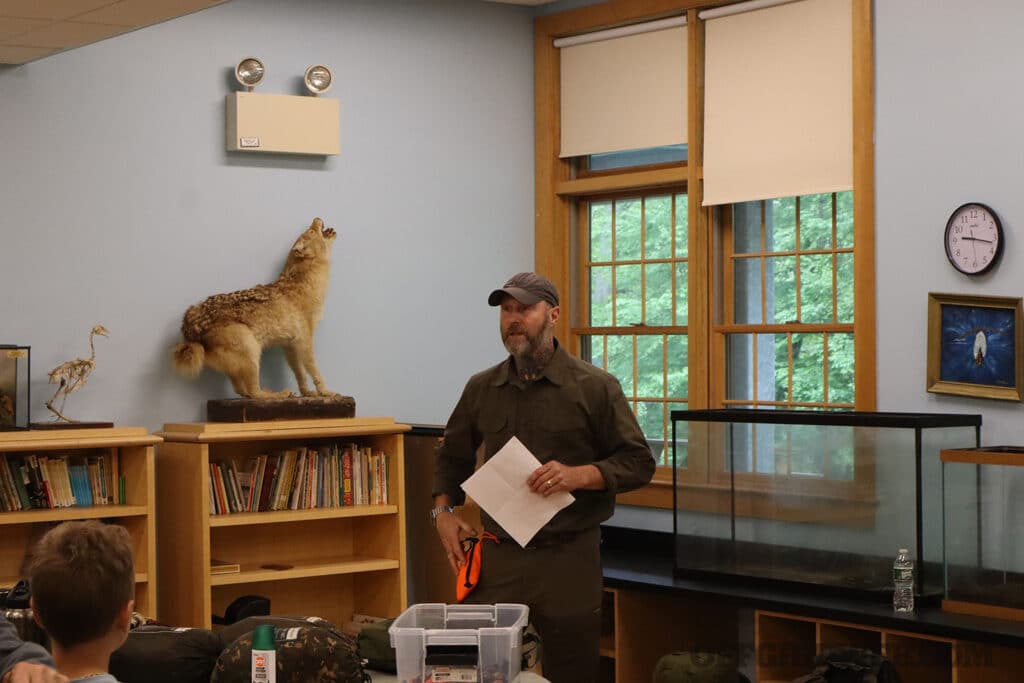
Safety Brief and Gear Check
The Wilderness Survival 1 course started with everyone meeting in a classroom on site to cover essential safety information and ensure each student brought proper equipment in their packs. Raven Wilderness School had plenty of equipment on hand for students to borrow in the event they forgot something or brought something that would not work well in the class.
The safety brief ended with a discussion of the survival mindset and detailed the importance of remaining calm, capable, and aware. A lesson that was reinforced throughout the days activities.
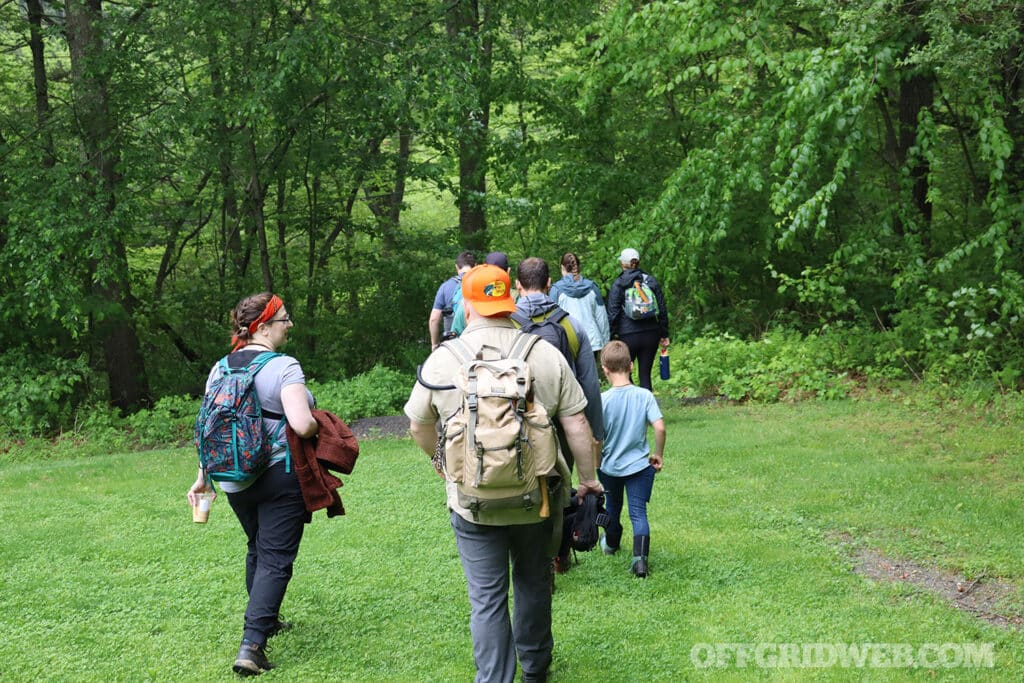
Into the Woods
After the safety brief we took a short hike into the woods to a wilderness camp area featuring a teepee, fire ring area, and some bushcrafted wooden stands. This area served as the “classroom” for the day’s activities. There was plenty of room for the nine students, three apprentices, an awesome dog, and Jeff to situate comfortably throughout the day.
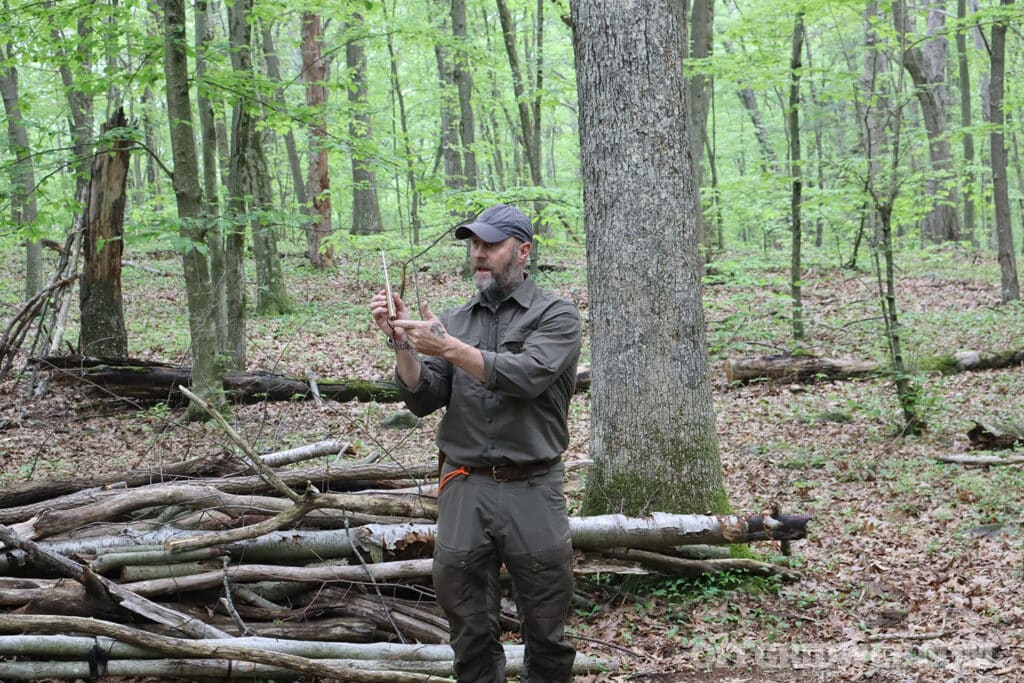
Knife and Tool Skills and Safety
The first lesson at wilderness camp detailed how to select a outdoor knife. Jeff emphasized the importance of a strong full tang blade that could stand up to the rigors of hard use tasks like batoning wood. He discussed the values of a scandi grind blade, quality steel, and proper sheath retention. From there he also covered the use of saws and axes while demonstrating proper knife use techniques including safe cutting, basic notches, and ways to utilize a small knife to do larger tasks. The Demonstration portion wrapped up with the creation of tent stakes and knife maintenance using a leather strop.
The students were then tasked with using knives and saws to take down saplings to create tent stakes and perfect their notch carving techniques.
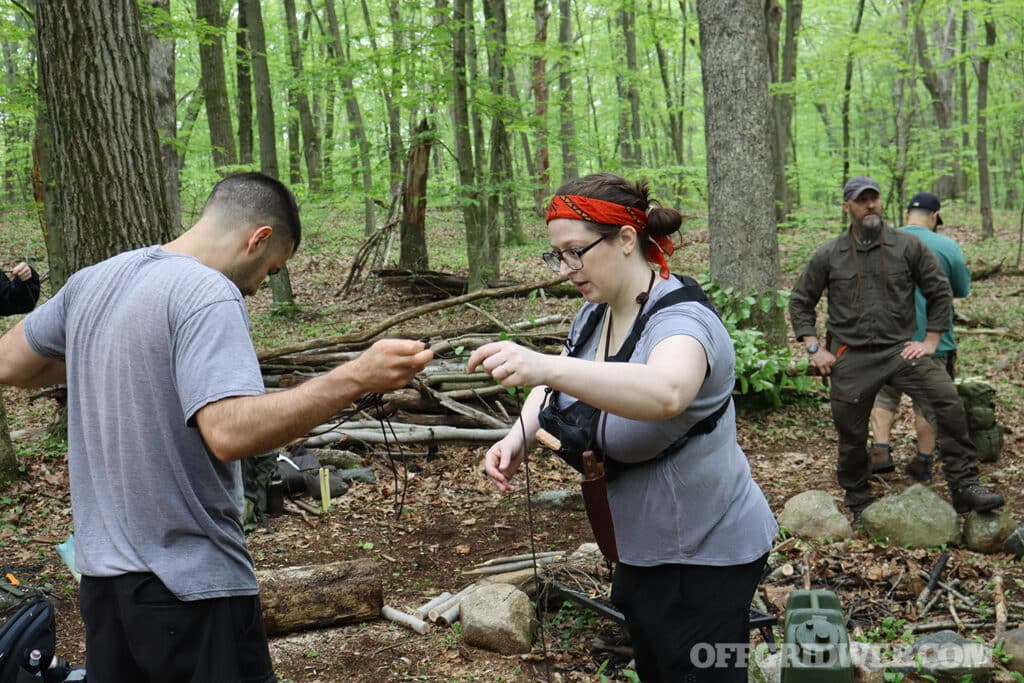
Paracord Management and Uses
Next up was paracord management. Jeff demonstrated how to cut paracord into useable lengths and had to create neat bundles for storage to avoid tangles. From there he also demonstrated how to use loop-to-loop connections to combine shorter lengths of paracord together if needed.
The value of this lesson was quickly realized when students dug into their bags to pull out paracord and nearly every student had a tangled mess of cord that needed to be untangled, cut, and bundled.
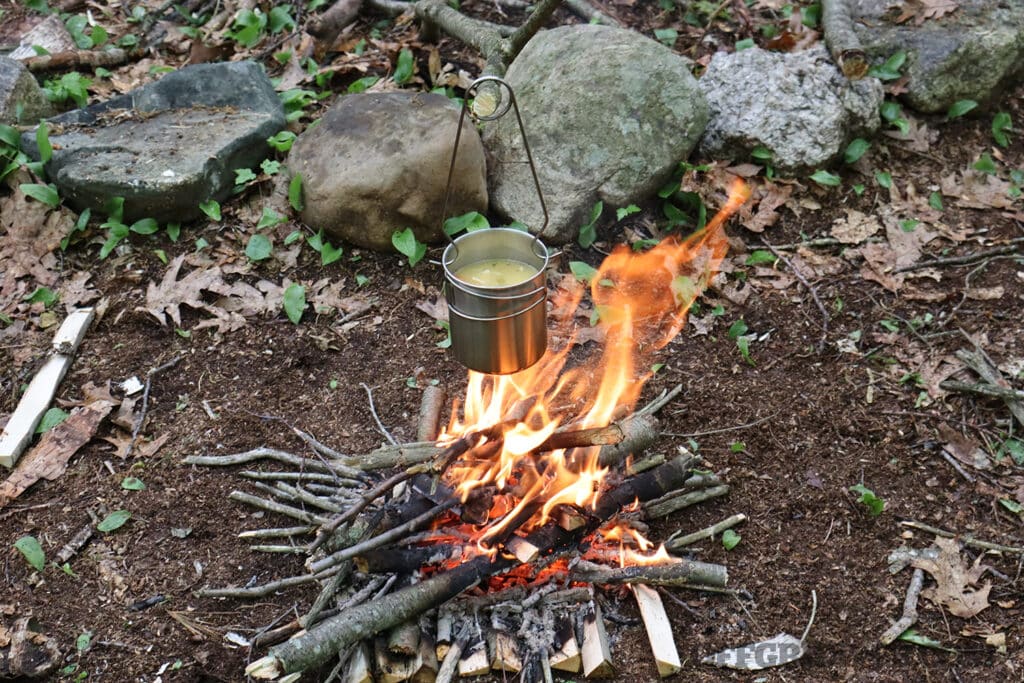
Fire Craft
Once paracord management was complete we moved into fire craft. Jeff discussed how to find dry wood in wet environments and demonstrated how to create a bed for fire on damp ground. The concepts of tinder, kindling, and fuel were discussed in detail and proper fire starting using a ferrocerium rod was demonstrated. Jeff also covered the ins and outs of fire safety and the importance of making sure the fire was extinguished after use.
Now it was time for students to start their own fires, and they set off into the woods to gather birch bark for tinder and dry wood for kindling and fuel. They practiced batoning with their knife to create the bed for their fires and began to assemble their fire.
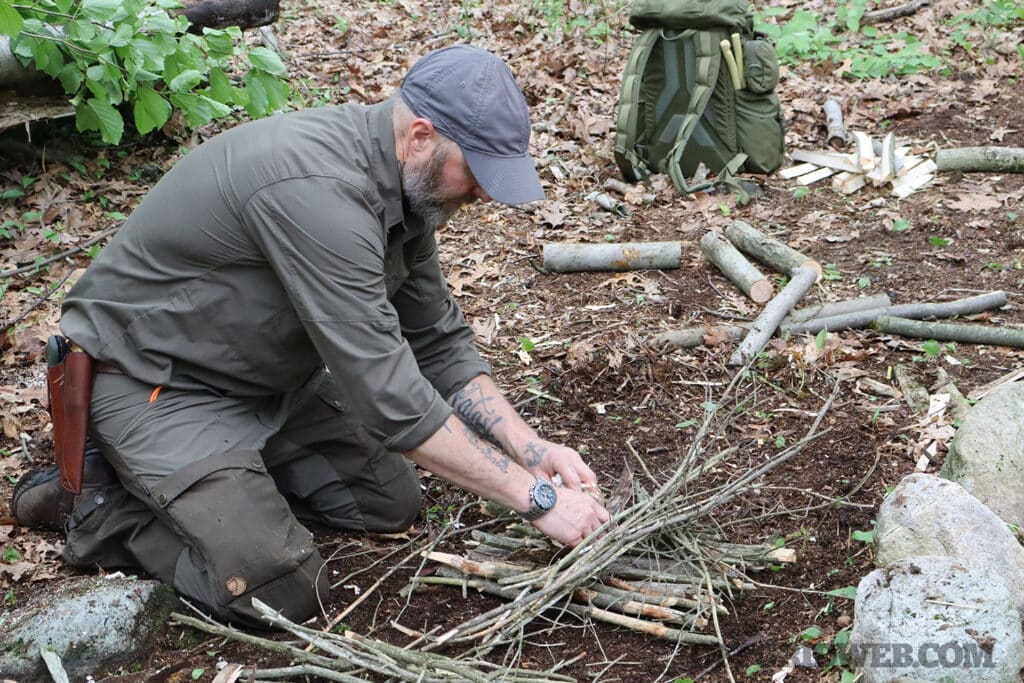
As expected, the students struggled to get fires started – while an experienced ferro rod user makes it look easy, students lacked the finesse when sparking the rod and many did not process their willow bark fine enough to spark. Jeff and his apprentices observed each student and after some time stepped in to offer advice but ensured each student was able to get the fire started on their own.
The satisfaction the students experienced when they finally got their fires started could be felt all around camp, but that moment of satisfaction was cut short when nature does what it often does – throws us a curve ball!
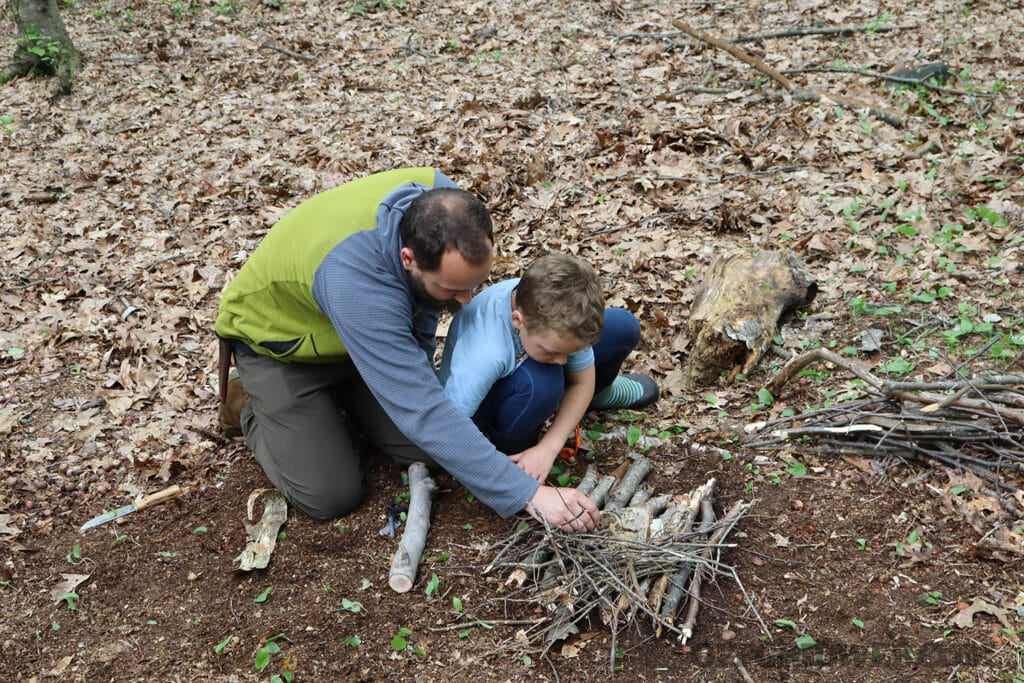
An Unexpected Challenge
Rain started coming down and Jeff used that opportunity to challenge students to adapt and keep their fires going while throughout lunch as the rain came down. The students, with some tips from the instructors, successfully kept their fires going during lunch, with one group successfully heating their lunch over the fire using a simple stick and pot hanger.
Water Purification
After lunch the rain let up and we took a short hike to a stream where Jeff covered some of the hazards in water sources, general sourcing practices, prefiltering, and boiling water. He also demonstrated the use of a prefilter and how a Grayl water filter bottle works.
Students were asked to gather water in their metal water bottles for later use and we then hiked back to wilderness camp.
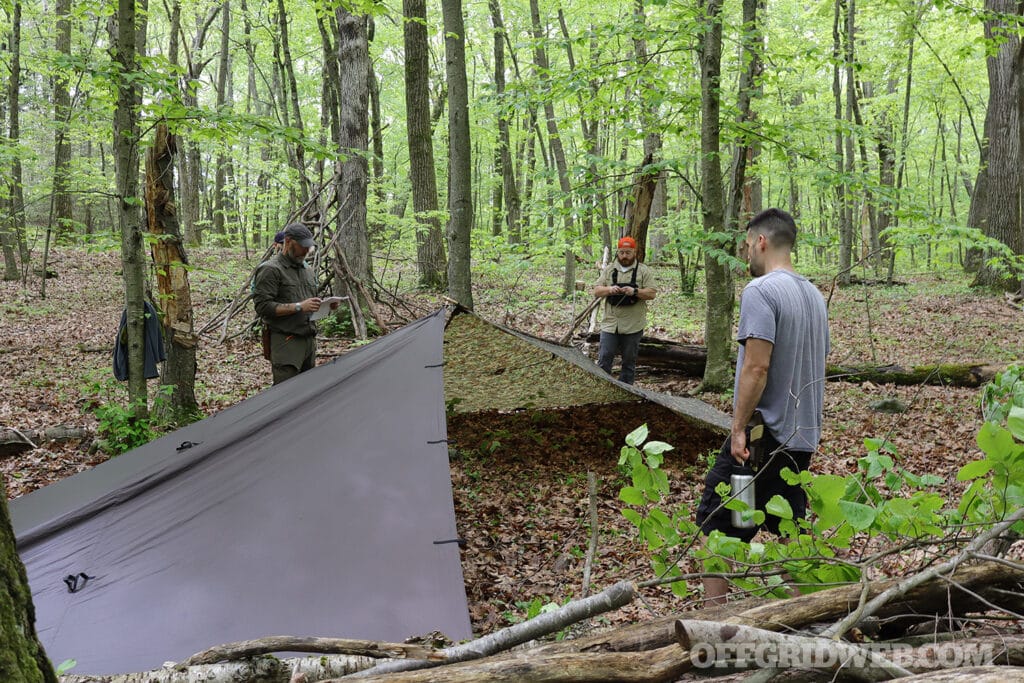
Shelter Building
When we returned to camp we moved into shelter building. Jeff did a great job discussing the importance of shelter and the threats of exposure in a wilderness survival situation. Jeff detailed the importance of creating an insulating layer from the ground, especially in cold and wet environments.
For the purposes of this course shelter building was limited to using a tarp, paracord, and the wooden stakes that were made earlier in the course.
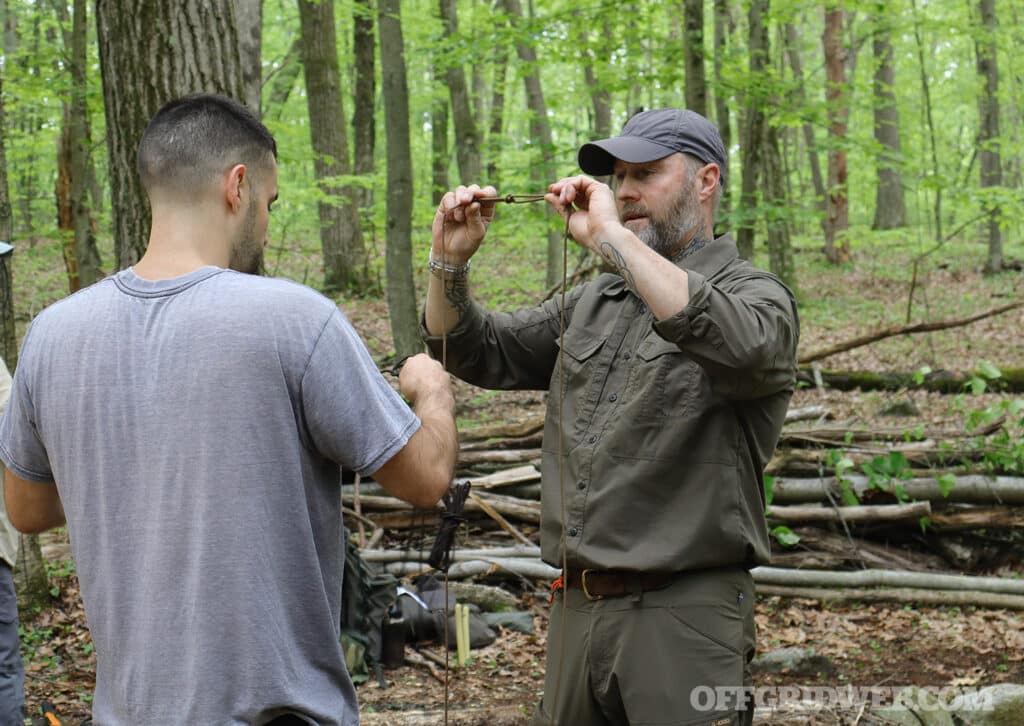
Jeff and his apprentices built a plow shelter and an A-Frame shelter. During each build different knots and hitches, including Jeff’s own “Hatch Hitch” were demonstrated in detail. The instruction team also demonstrated how to build and connect multiple shelters to conserve cordage.
The students set out to practice building their own shelters and Jeff went around to each student helping them get their knot and hitch techniques dialed in.
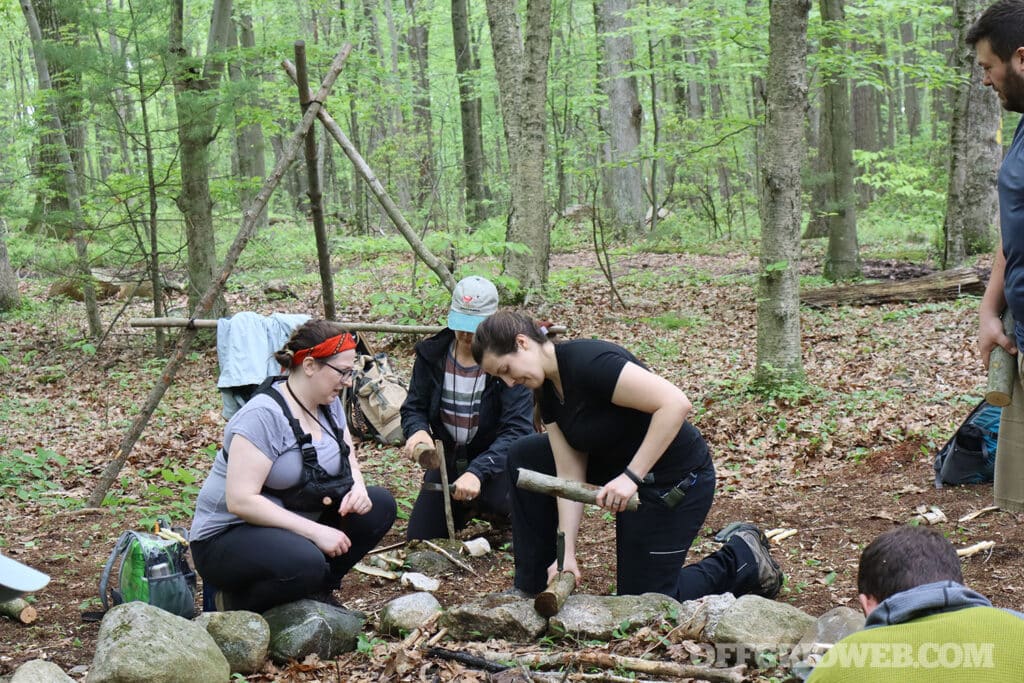
The Final Challenge
After a full day of learning and practice, the time came for the students to put their newfound wilderness survival skills to the test! Jeff broke the students into groups and tasked each group with building a functional shelter, building a fire, and bringing a container of water to a rolling boil and safely removing the water from the fire. They were given just over an hour to complete this task.
Each group set out to identify a safe location to build their shelters and gather materials. It was great to see each group using teamwork to break down tasks to individual group members to complete all their tasks in the given time frame.
At the end of the allotted time each group had successfully completed all their tasks and what started as a group of outdoor enthusiasts ended and a budding group of wilderness survivalists!
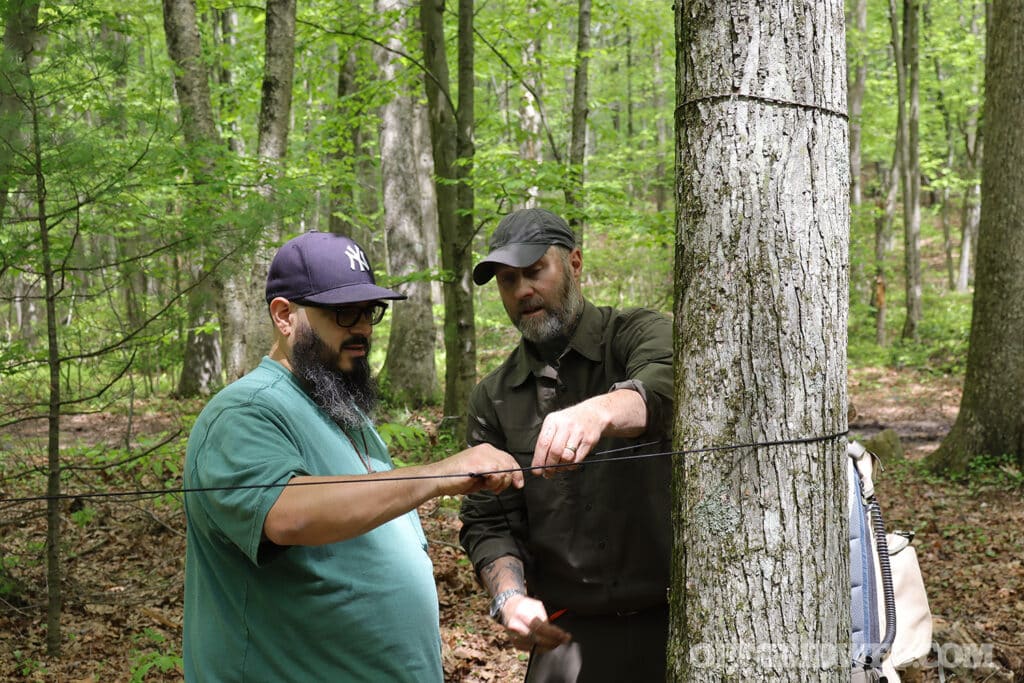
Debrief
After the final challenge all fires were properly extinguished, shelters were taken down, and the wilderness camp was cleaned up. We hiked back to our starting point in the classroom where Jeff debriefed the group as to what they learned for the day and the next steps they could take to improve their skills. He answered all the questions the students had and ended up demonstrating and practicing a few more knots with the group.
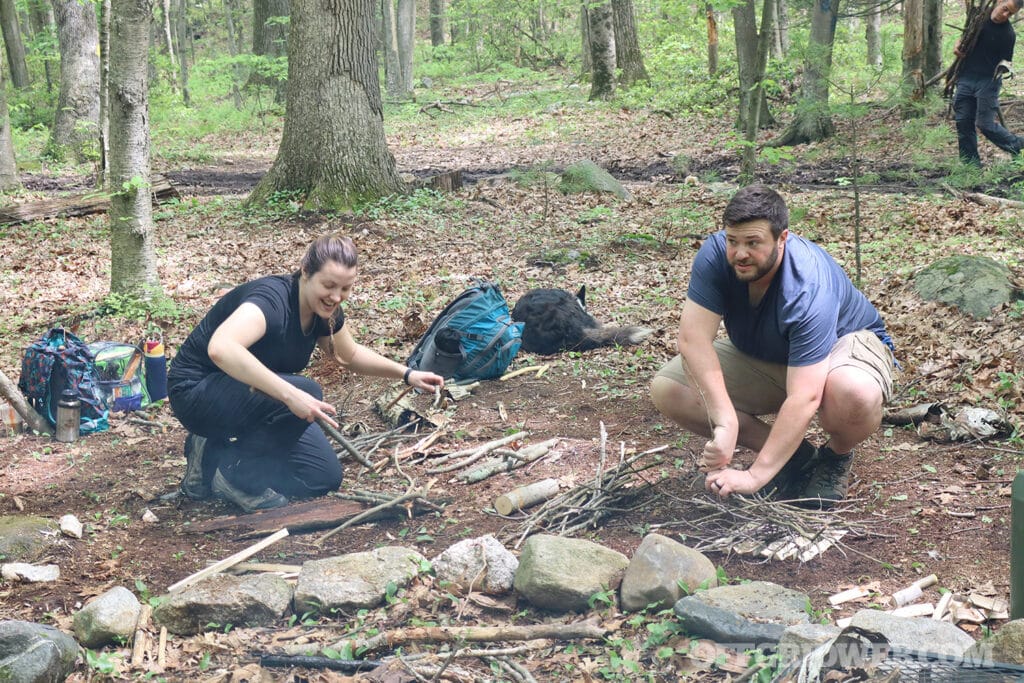
Overall, Jeff and his team did a great job getting vital wilderness survival information and skills to a class of outdoors enthusiasts that wanted to take their passions to the next level. While the course focused on the basics, it left students with tangible skills that can be used in a wilderness survival scenario and created a solid foundation in which they can build upon. Each lesson was carefully crafted to draw upon Jeff’s training and personal experience which helped drive home the importance of each skill. The learning environment was welcoming and free from judgement. The students were always encouraged to ask questions and share their experiences – and in some cases their lack of experience!
If you are a novice Wilderness Survival I is a great place to start. Raven Wilderness School offers more advanced classes for those with more experience and from what I discovered in conversation with Jeff and his team, higher level classes push students to further develop their ability to adapt to the unknown and survive with limited resources and improvised tools. Personally, I am looking forward to seeing some of these more advanced courses in action!
Do you want to develop wilderness survival skills? Check out all the course offerings with Jeff Hatch at the Raven Wilderness School!
Don’t miss essential survival insights—sign up for Recoil Offgrid’s free newsletter today!
Check out our other publications on the web: Recoil | Gun Digest | Blade | RecoilTV | RECOILtv (YouTube)
 STAY SAFE: Download a Free copy of the OFFGRID Outbreak Issue
STAY SAFE: Download a Free copy of the OFFGRID Outbreak Issue
No Comments